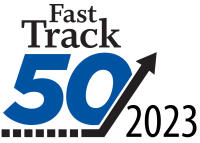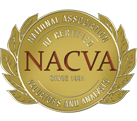Overview of Pandemic Relief Bill for Businesses
January 13, 2021
What follows is a summary of the stimulus relief for businesses, which is part of the Consolidated Appropriations Act, 2021 (H.R. 133) signed into law on December 27, 2020.
Paycheck Protection Program second draw
Congress has created a PPP second draw available to smaller businesses that can show their business has been impacted by the pandemic. The second draw offers a similar package to the PPP offered out of the Cares Act earlier in 2020. There have been some changes and limitations put in place for the second draw including:
- Company size is smaller. Instead of 500 or less employees as it was in the Cares Act, the employee limits are reduced to 300.
- Companies will have to show a 25% or more reduction in revenue for an individual quarter in 2020 compared to 2019. This requires comparing quarterly ----financials for each quarter of 2020 to each quarter in 2019.
- Businesses that have 20% or more ownership by Individuals or other entities based in China or Hong Kong are ineligible for the PPP second draw.
- Businesses that were created or organized in China or Hong Kong or have significant operations in those countries are not eligible.
- Businesses engaged in political or lobbying activities are not eligible. This includes political research, political advocacy and public policy strategy companies
-
Additional
ineligible
businesses
include:
- Life insurance companies
- Lending institutions
- Passive businesses owned by developers and landlords that do not actively use or occupy the assets
- Businesses located outside the United States
- Pyramid sale distribution businesses
- Businesses with more than one-third of gross revenue from gambling
- Businesses involved in a federal illegal activity
- Private clubs that limit membership to members for any reason other than capacity
- Government-owned businesses (does not include businesses controlled by a Native American tribe)
- Businesses that have an associate that is incarcerated, on parole or probation, or has been indicted for a felony or crime or moral turpitude
- Businesses that present live performances that are sexual in nature or sell products, services or have displays that are sexual in nature
- Businesses that have defaulted on a federal loan or federally assisted financing
Calculation of loan: The loan calculation follows the same rules as it did under the Cares Act with the exception that you can choose to use payroll amounts from the calendar year 2019 or the 12 months immediately preceding the date of the loan application.
Hotels and restaurants
Borrowers with North American Industry Classification System (NAICS) codes starting with 72 (hotels and restaurants) can get up to three and one-half (3.5) times their monthly average payroll costs.
Deductibility of expenses forgiven under the PPP and PPP second draw
Under original guidance from the Department of Treasury, the expenses paid with funds from the PPP loans were not deductible. The passing of this new bill has clarified that the treatment of the forgiveness will be as tax-exempt income. The forgiveness amount will not add-back the forgiveness as income or result in any reduction in expenses paid.
PPP simplified forgiveness application
A simplified application (one-page) will be released for loans of $150,000 or less in the coming weeks. We will provide more details when the Department of Treasury releases the new application.
Tax deduction for 100 percent of business meals starting January 1, 2021
Currently, a business may take a tax deduction of 50% of business meals. Starting on January 1, 2021 and ending on December 31, 2022, all meals from restaurants will be 100% tax deductible.
Employee Retention Tax Credit extension and changes
Changes have been made to the Employee Retention Tax Credit including:
- The credit is now allowed for wages paid through June 30, 2021. The original credit was due to expire on January 1, 2021.
- The credit limit of $10,000 wages per employee has been changed to $10,000 per employee per quarter for 2021.
- The credit limitation has been changed from 50% of qualified wages to 70% of qualified wages in 2021.
- The gross receipts test has been changed to comparing the respective quarter in the current year.
- The credit can also be taken if the payroll for the Employee Retention Tax Credit was not paid with forgiven (or forgivable) PPP funds. The payroll cannot be used for both the PPP Loan forgiveness application AND the Employee Retention Tax Credit. However, if payroll is large enough to be used for both, it is allowed.
- For 2020, the credit calculation has not changed, only that it can be taken in conjunction with the PPP from the above bullet.
- The changes to this tax credit are retroactive to the original Cares Act date of March 12, 2020.
Extension of Families First Coronavirus Response Act sick and family leave
The FFCRA sick and leave pay has been extended for qualified employees until March 31, 2021. The original Act was set to expire on December 31, 2020. All the same requirements will remain in place with the exception of date extension.
If you wish to discuss any of these topics with one of our professionals, please contact your NMS Accountant or one of our offices.






